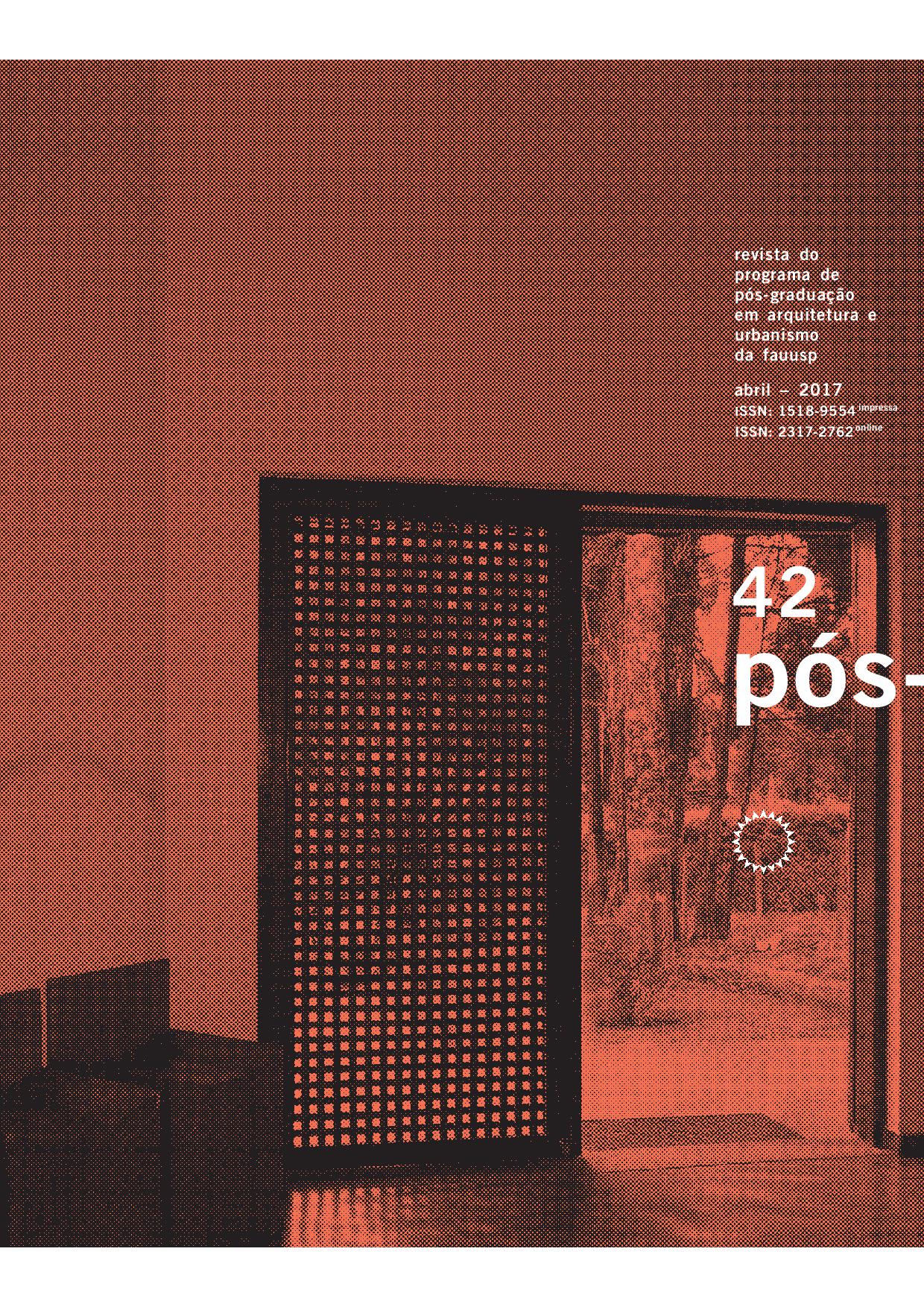Architectural corpography: the method of the observer
DOI:
https://doi.org/10.11606/issn.2317-2762.v24i42p12-31Keywords:
Corpography. Walk. Space. Body. Movement.Abstract
It is understood as an architectural corpography, in the theoretical and methodological context that guides this article, the record of the displacement of an observer moving through the built environment, thereby seeking to describe - through text, graphical notations and sequences of images – the effects of architecture on the relationship between users and spaces. It is understood here as effects of architecture the inherent tensions – either positive (empathy) or negative (friction) - that permeate the relationship between actions and the configuration of the spaces where they occur. We will therefore be dealing with the graphic representation of bodies in space as a method of study in architecture at its different scales, from the building to the city scale. The procedure outlined here is based on the observation and register - planimetric and photographic - by an observer that moves on foot, sensitive to the effects coming from the spatial situations where he passes and with the intention of describing them. The method is so proposed to graphically describe what is captured by the observer's senses in its course through a given situation of study, working in an associated way, with procedures and categories from the studies of spatial perception, including phenomenology and, on the other hand, from the studies of spatial configuration, including spatial syntax. Two questions serve as a guide to the progress of the text. The first one explores the way people relate to the spaces through the different senses. The second refers to what exactly in the spaces would affect their senses. The descriptive way thus outlined brings together, on the one hand, perceptions of this observer moving in space, registered in images and text and, on the other hand, privileged information of configurational nature such as maps and plants, cartographic and diagrammatic material that will instruct the observer's route. The use of walking as a way of producing knowledge in architecture implies, on the one hand, in the specification of a set of procedures, which we will call as the method of the observerand, on the other hand, in a brief review of literature that is intended to support the procedure from a theoretical point of view. The article presents this procedure in detail and, at the end, a case study which consists of carrying out a walk through an object of study and its immediate surroundings, a path that will propitiate analyzes of the quality of the spatial fruition at different scales.Downloads
References
ANDO, T. Shintai and Space. In S.Marble et al (Eds.), Architecture and Body. New York: Rizzoli, 1988.
CULLEN, G. Townscape. London : Architectural Press 1961.
ETLIN, R. Aesthetics and the spatial sense of self, in the Journal of Aesthetics and Art Criticism, volume 6, number 1 winter 1998, pp. 1-19.
HERTZBERGER, H. Lessons for Students of Architecture, Uitgeverij 010 Publishers, Rotterdam, 1974.
HILLIER et al (1983), Space Syntax: A different urban perspective, em Architecture Journal 4 / London.
HILLIER, B. and Hanson, J. The Social Logic of Space, Cambridge University Press, Cambridge 1984.
KOHLER, B. Architecture History as the History of Spatial Experience, in: Daidalos, No. 67, 1998, pp. 36-43.
LE CORBUSIER, Towards a New Architecture, London: J. Rodker, 1931.
LYNCH, K. (1960) A imagem da cidade, Martins Fontes, São Paulo.
SCHMARSOW A. The essence of architectural creation, em Empathy, Form, and Space, Problems in German Aesthetics, 1873-1893, The Getty Center Publication Programme, Santa Monica 1994.
ZEVI, B. Saber Ver a Arquitetura, Martins Fontes, São Paulo, 1996 (orig.1948).
Downloads
Published
Issue
Section
License

This work is licensed under a Creative Commons Attribution 4.0 International License.
DIADORIM - Diretório de Políticas Editoriais












